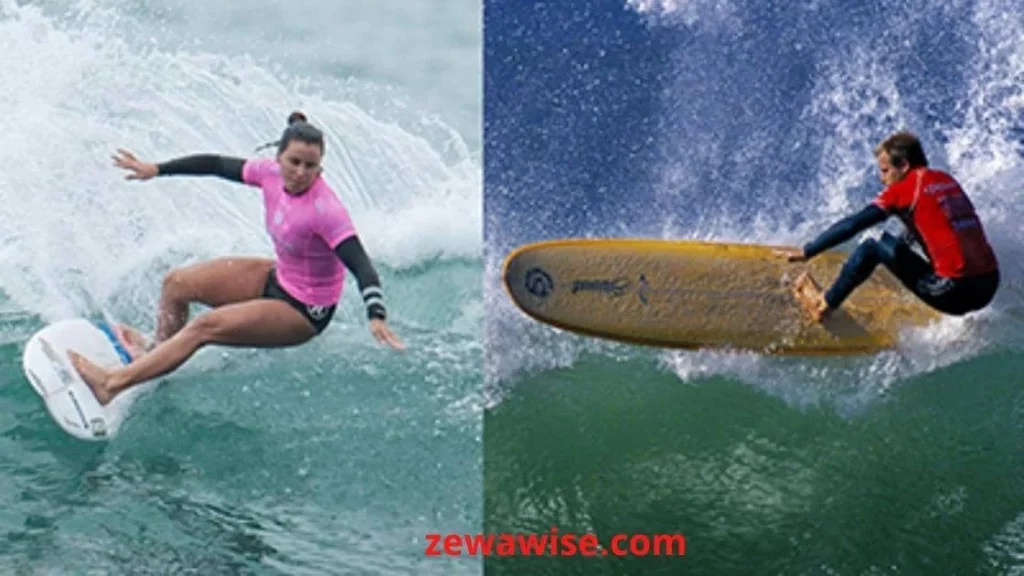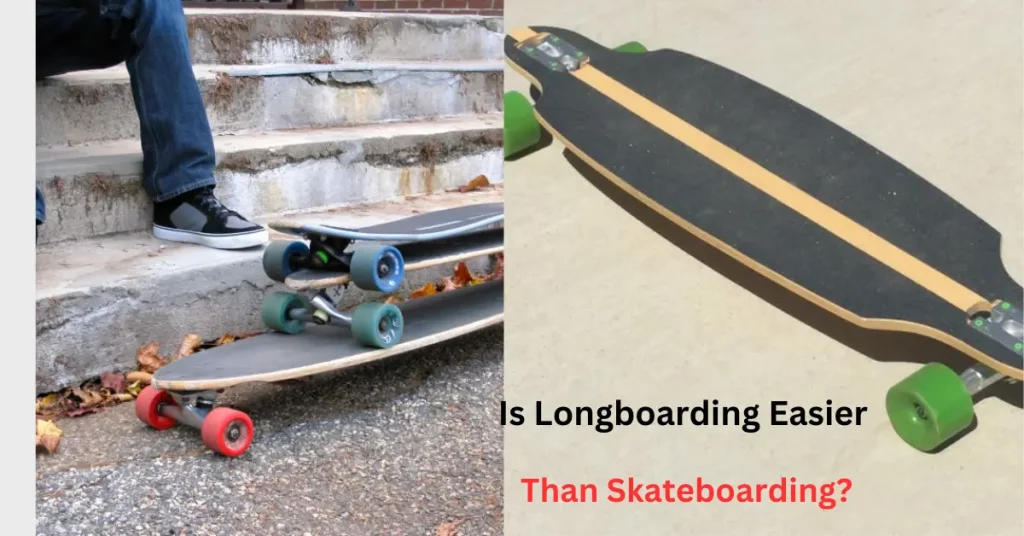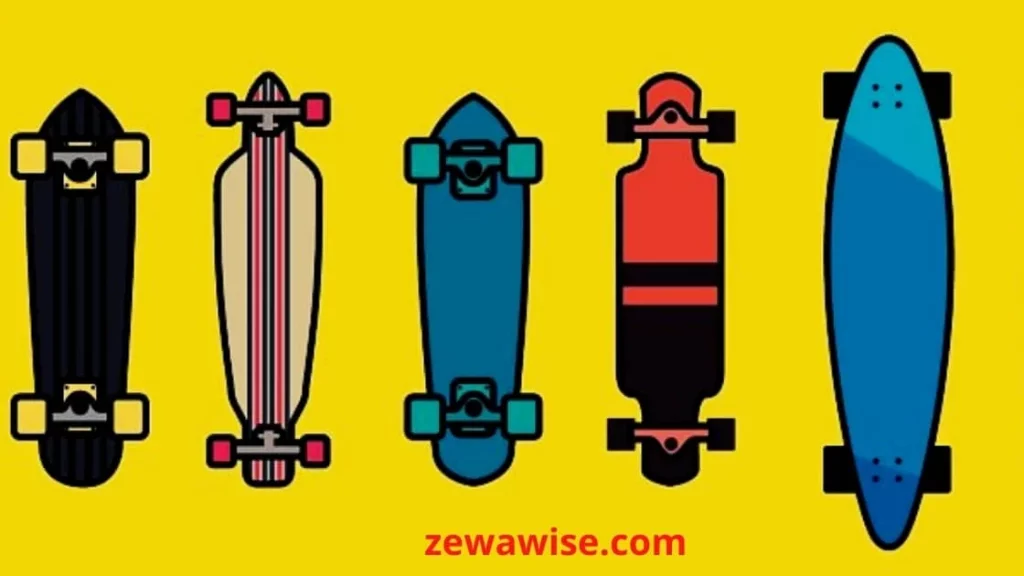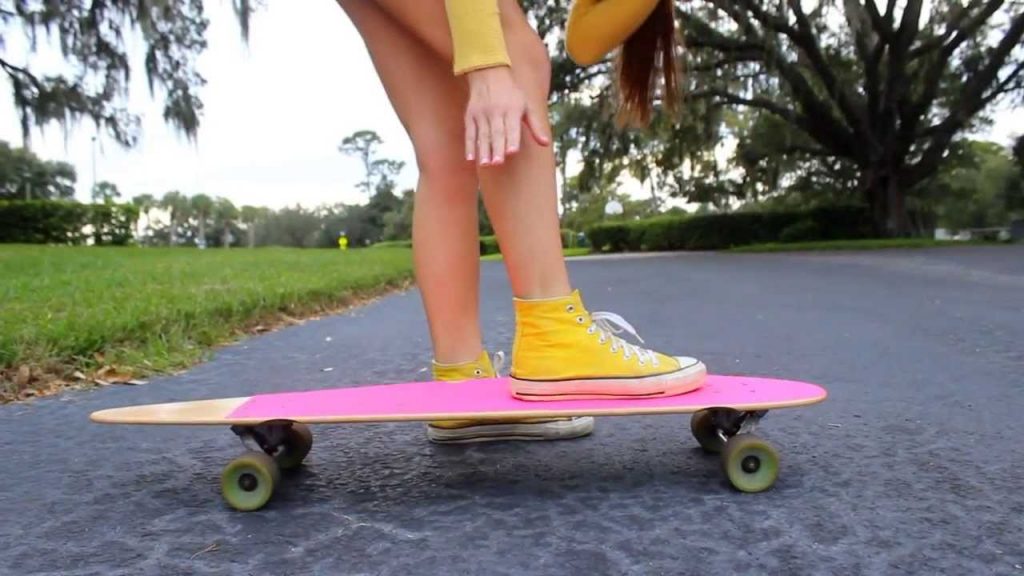Longboard vs Shortboard: The main difference between longboards and shortboards lies in their size and manoeuvrability. Longboards, typically ranging from 8 to 14 feet, offer greater stability and are ideal for cruising and smooth turns, making them suitable for beginners. Shortboards, usually 5 to 7 feet in length, are designed for more aggressive and sharper turns, appealing to experienced surfers looking for dynamic performance and the ability to tackle larger waves and complex manoeuvres.
Longboard vs Shortboard: A detailed analysis
The Ultimate Guide To Longboard vs Shortboard is given below:
1-Longboard
Longboards are those skateboards that have at least 9 feet in height. Moreover, skateboards with less than 9 feet in height can not be termed long skateboards. Many boards are nearly 8 feet in size, but we call them mid-length or fun skateboards.
Interestingly, the front of the longboard has a round nose, whereas the scoreboards have pointed snouts, making them perfect for riding down the hill. Typically, one to three stringers are found in the skateboard that goes through the whole deck. So, you can use it in water as well, thanks to its surfboard-like design.
Some longboards come in the market with a stringer-less design. Although they are challenging to craft still most of them are prone to break. Other than that, either the longboard comes in a 2+1 setup or a single fin step-up, showing its versatility.
Pros
- Easier to learn
- Offers more stability
- More ride time
- You can ride it on short waves as well
- Excellent for nose rides and cross-steps
- Affordable price
Cons
- Not too fast
- Bulky and heavier
- Longboards are complex for duck diving
- Prone to breaking and cracking
2-Shortboard
Any skateboard with 7 feet or less deck length is called a shortboard. The sunny side of its shortboard is excellent for high-level wave riding because of its harsh nature. Moreover, the short size also lets the user perform duck dive precisely because its configuration allows it.
These skateboards are created from fiberglass and other durable substances along with a 3-fin thruster design, making them able to withstand challenging situations. Besides that, a shortboard might have stringers or not. Many shortboards are bolstered with rails of carbon fiber to improve their potency.
The weight of shortboards is significantly lighter than longboards making it easy for surfers to maneuver. Commonly a shortboard comes with a pointed nose, but some have a round or fuller nose. Round nose shortboards are intended for newbies because they are not suitable for fast riding over waves.
The best part is these boards are versatile in fin setup because you can choose from you can set up single fin, quad, fins, five fins, 2+1 fins, and even thrusters depending on the needs. In addition, the variation in the tail also lets you choose from swallowtail, bat tail, round tail, squash tail, and classical fishtail.
Pros
- For pro players
- Incredibly fast speed
- Easy to maneuver
- They are versatile in fin setups
- Best for riding in hollow waves
- Suitable for duck diving
Cons
- High price
- Not ideal for surfing on short waves
- It is not meant for beginners
- Hard to balance
Who should pick up a longboard?
Longboards are a professional and simple option to surf and ride over large waves correctly. As a newbie, you should go for the longest longboard because it will be easy for you to maneuver or control it. On the other hand, it is tough to handle it on large waves because of its considerable size and hefty weight.
If you want to surf on big and sharp waves swiftly, then you should be better off with a shortboard. Again, I suggest you learn the basics and practice surfing on a longboard, then move on to the shortboard for performing tricks. Moreover, some longboard stunts require years of practice to accomplish perfectly.
How much does a longboard cost?
A quality longboard can cost you anything between 150 to 450 dollars. The reason behind their high price is they are engineered from durable and premium materials. If you do not want to spend that much as a beginner, then you can buy standard quality longboards, and their price will be around 60 to 150 dollars.
Who should pick up a shortboard?
Shortboards are relatively new compared to longboards. Anyone looking to progress must get a shortboard because, for learning purposes, it is not good because of its fast speed. Not only the maneuvering of turns but also cutbacks on waves are effortless with a shortboard.
If you are looking to perform stunts with fascinating speed, then you have to go with a shortboard. As a newbie, it can be troublesome to balance on the scoreboard, but if you have learned the basics of surfing over the longboard, you will not find it too hard. With the ability to maintain the center of gravity, you can experience the fastest surfing of your life.
How much does a shortboard cost?
A shortboard will cost you between 500 to 800 dollars on average. If you want a professional board, then the price can be higher than that. The price is commonly not affordable for many who want to learn about surfing. Similarly, if your budget is low, you can get a longboard in your price range.
Longboard vs Shortboard Surfing
In surfing, the choice between a longboard and a shortboard significantly impacts the surfing experience and style.
- Longboard Surfing: Longboards, usually over 8 feet long, provide a larger surface area, making them more stable and buoyant. This stability is excellent for beginners, as it’s easier to catch waves and stand up. Longboards are best suited for smaller, softer waves and are renowned for their smooth, gliding style. They’re ideal for nose-riding and graceful turns, offering a classic surfing experience.
- Shortboard Surfing: Shortboards, generally under 7 feet in length, are designed for more aggressive and technical surfing. They are less stable but highly maneuverable, allowing experienced surfers to perform sharp turns, quick maneuvers, and ride larger, more powerful waves. Shortboards are favored in competitive surfing due to their versatility and ability to execute advanced techniques like aerials and deep tube riding.
FAQs
What is the fastest longboard speed?
You can surf with a longboard at speeds of 12 to 15 miles per hour usually. Moreover, the fastest speed that can be attained while surfing with these boards is 25 miles per hour. But it mainly depends upon the weight of the surfer and the quality of the longboard.
Is it easier to catch waves on a longboard?
Longboards offer more time in the water, which directly increases the wave count. Surfing with a longboard gives longer rides because its large size and width allow it to grab more waves as compared to the shortboards. Simply put, the length of the ride on a longboard while surfing is better than on a shortboard.
Can you built your own longboard?
If you are short of money and want to get an incredible surfing experience as a beginner, then you can make your own longboard at home. Not only is it cost-effective to craft a DIY longboard, but it is also fun as well. Aside from this, it does not require a top-level of knowledge to accomplish that task, making it an ideal opportunity to enjoy while saving money.
Is there any surfboard that gives the best of both longboard and shortboard?
Yes, if you want to enjoy the best of the major categories of a surfboard, then you can use a mid-size surfboard with 6.5 to 8.5 inches of length. With these boards, you will be able to surf fast with better control and more ride timing. Moreover, if you want to transition from shorter surfboards to large ones, then these are excellent.
Sitting on the shortboard is one of the initial things you need to grasp when learning how to surf. Perfect balance and practice are necessary to do it properly. You need to sit on the board until it catches a wave. After that, you will get the ultimate surfing experience.
Final Words
When it comes to Longboard vs Shortboard, no one is better for all the stuff. It’s your requirements and intentions which make any one of them suitable for you. Longboards are ideal for tackling monstrous waves, but they are less maneuverable than shortboards. If you need a compact and fast surfboard, then pick a shortboard.

“Welcome to our website, Here You’ll find a wealth of information on finding the right skating gear that will last for years to come, as well as tips and tricks to help you improve your skills. Whether you’re a beginner or an experienced skater, you’ll find something of value here.”



